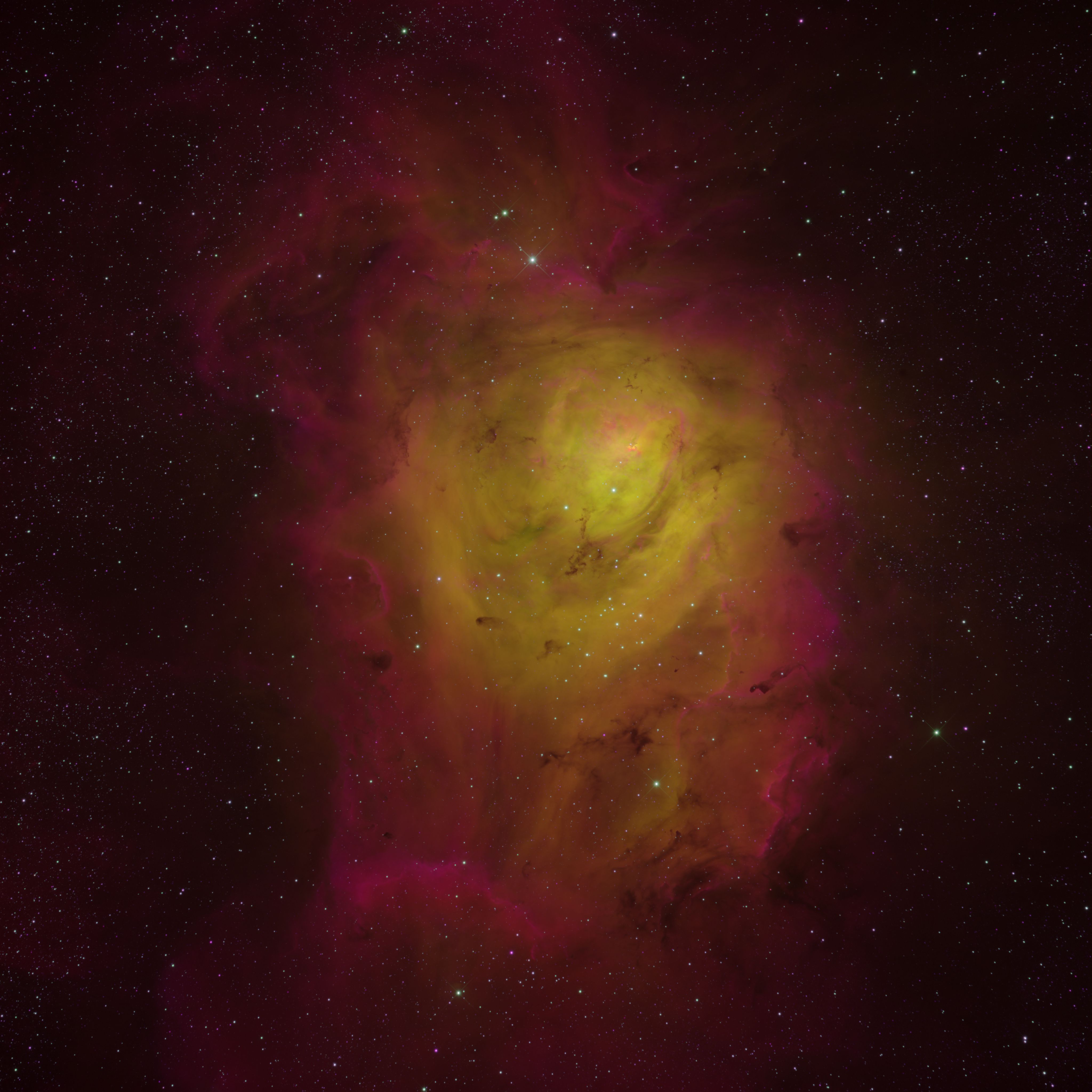
The Lagoon Nebula (M8/NGC 6523)
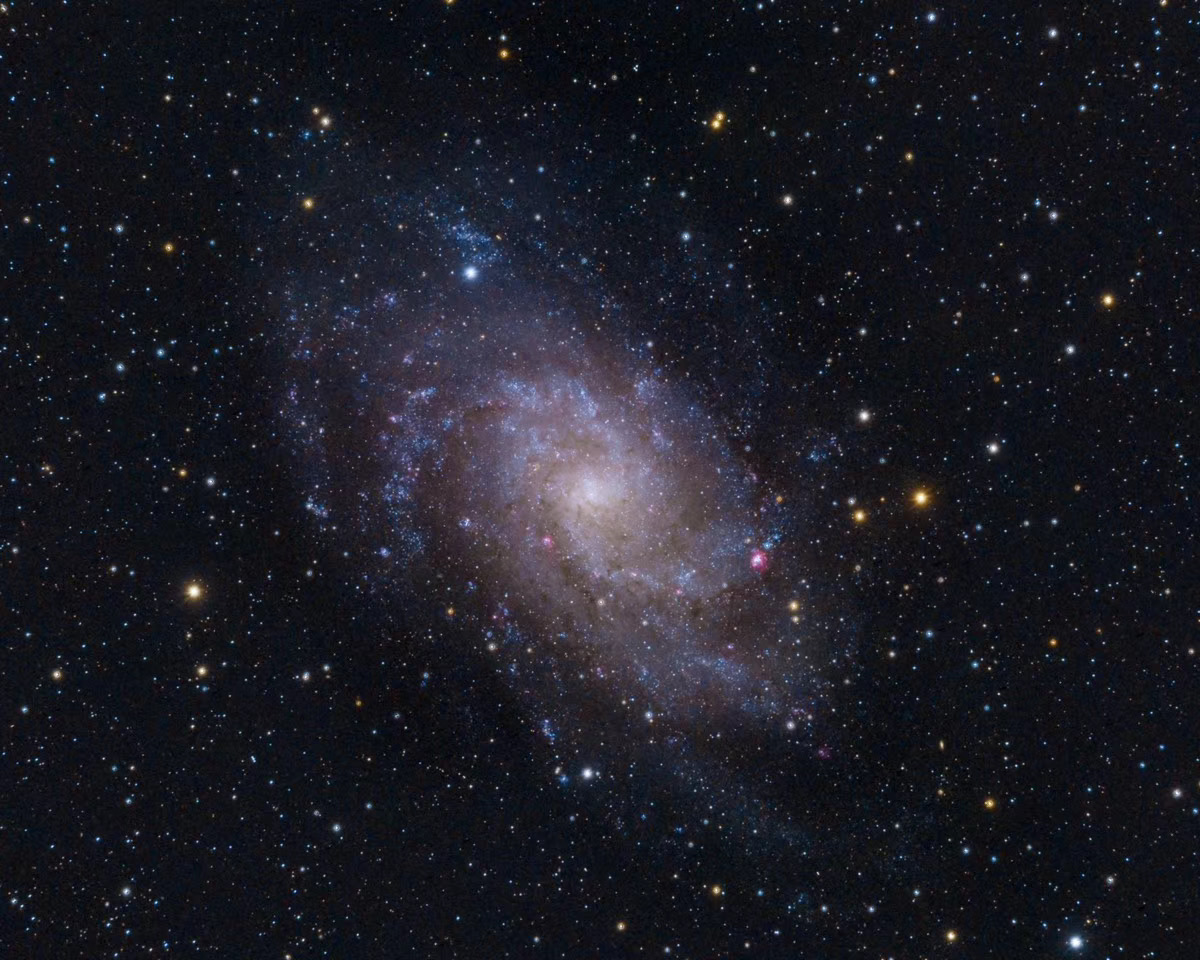
The Triangulum Galaxy (M33)
The Orion Nebula (M42)
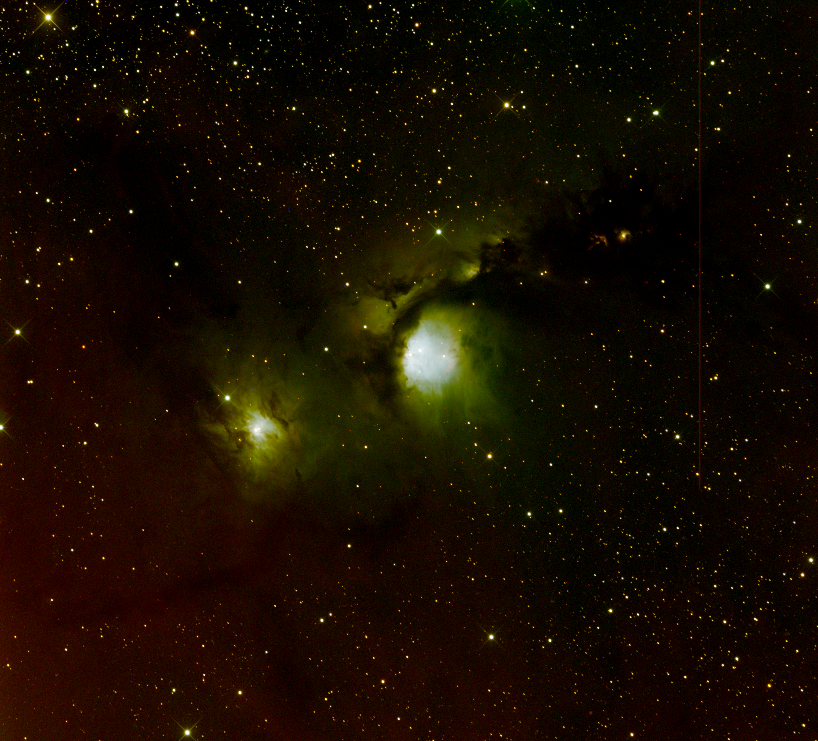
The M78 Nebula (NGC 2068)
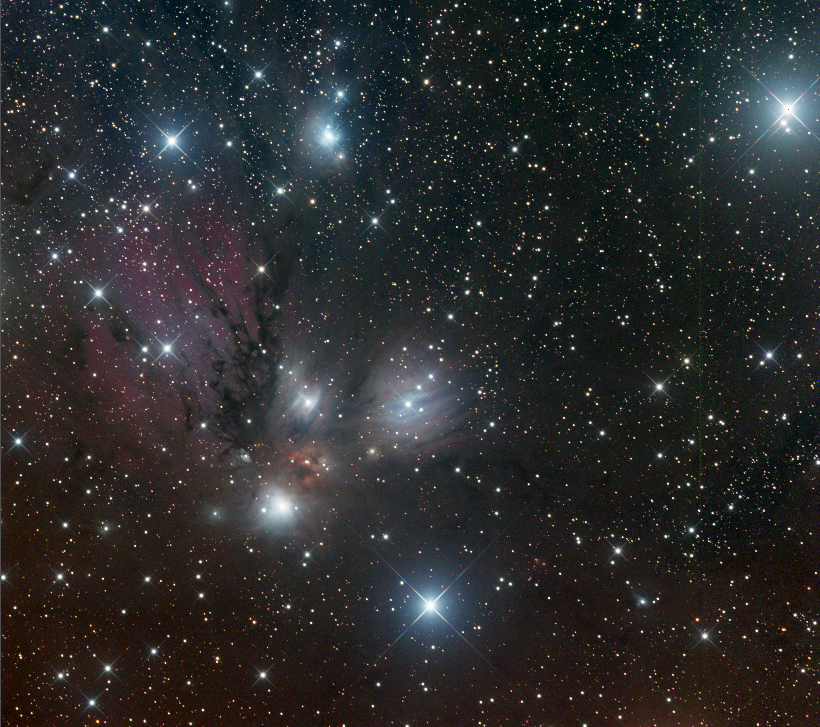
NGC 2170
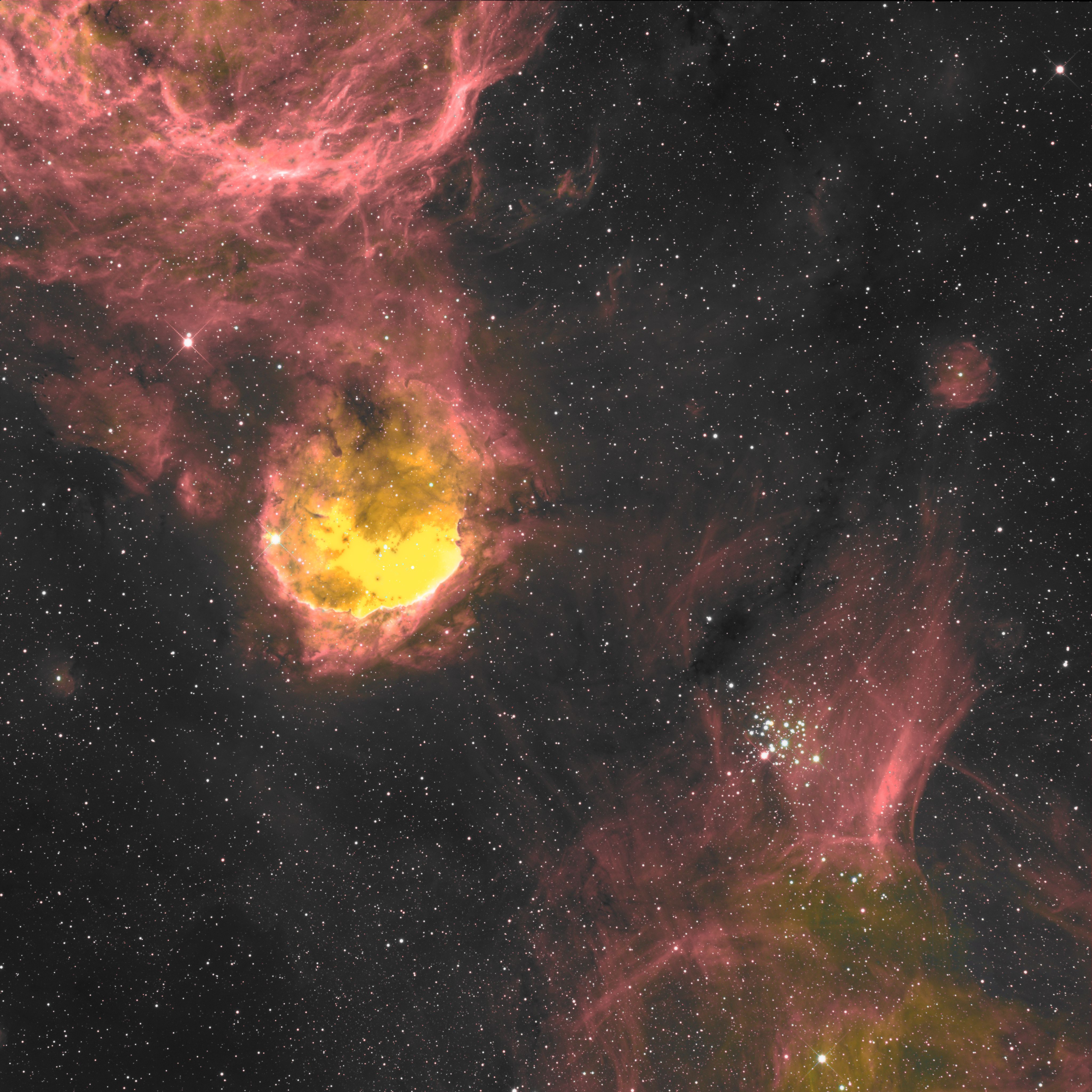
IC 2599
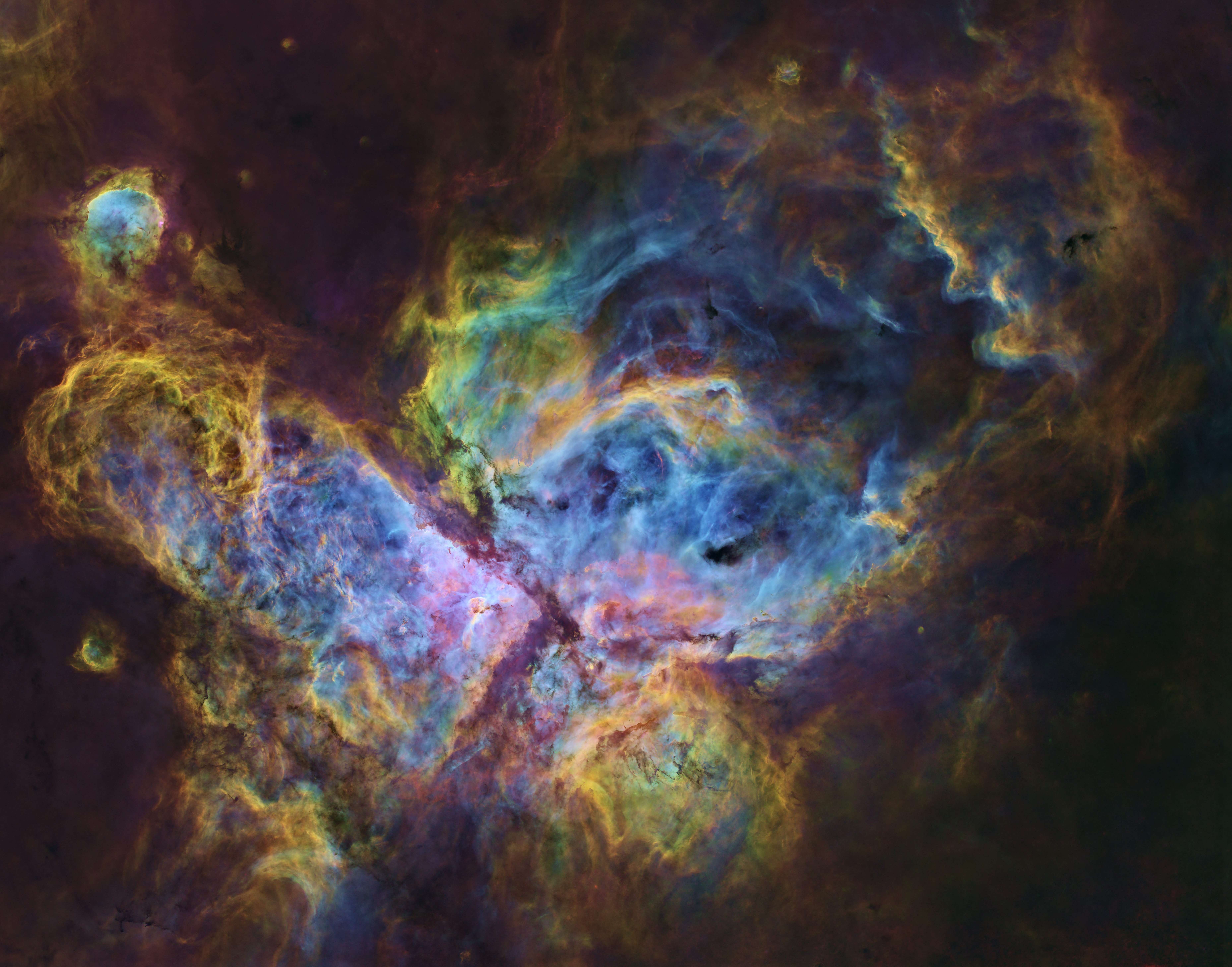
NGC 3372
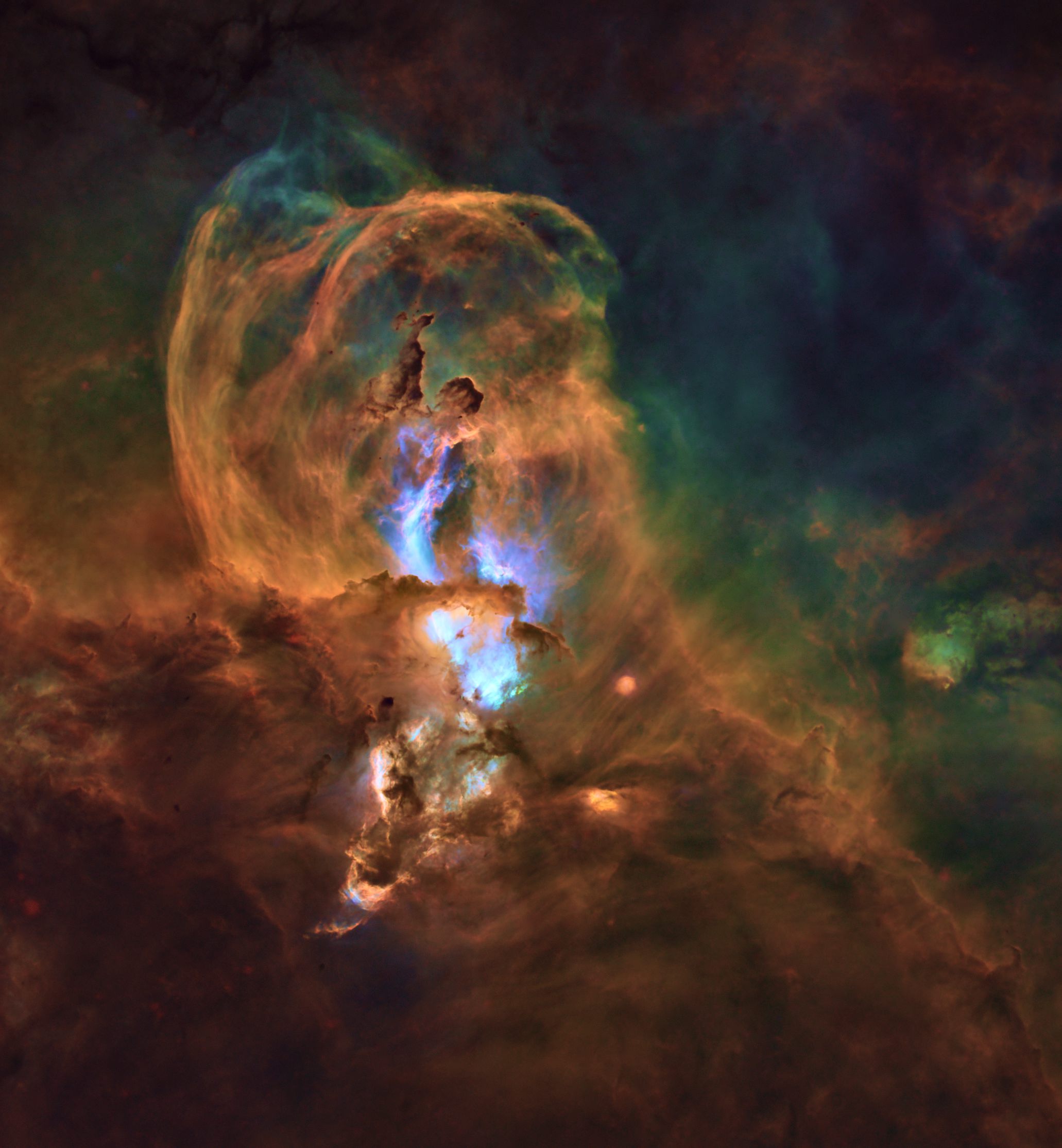
NGC 3576
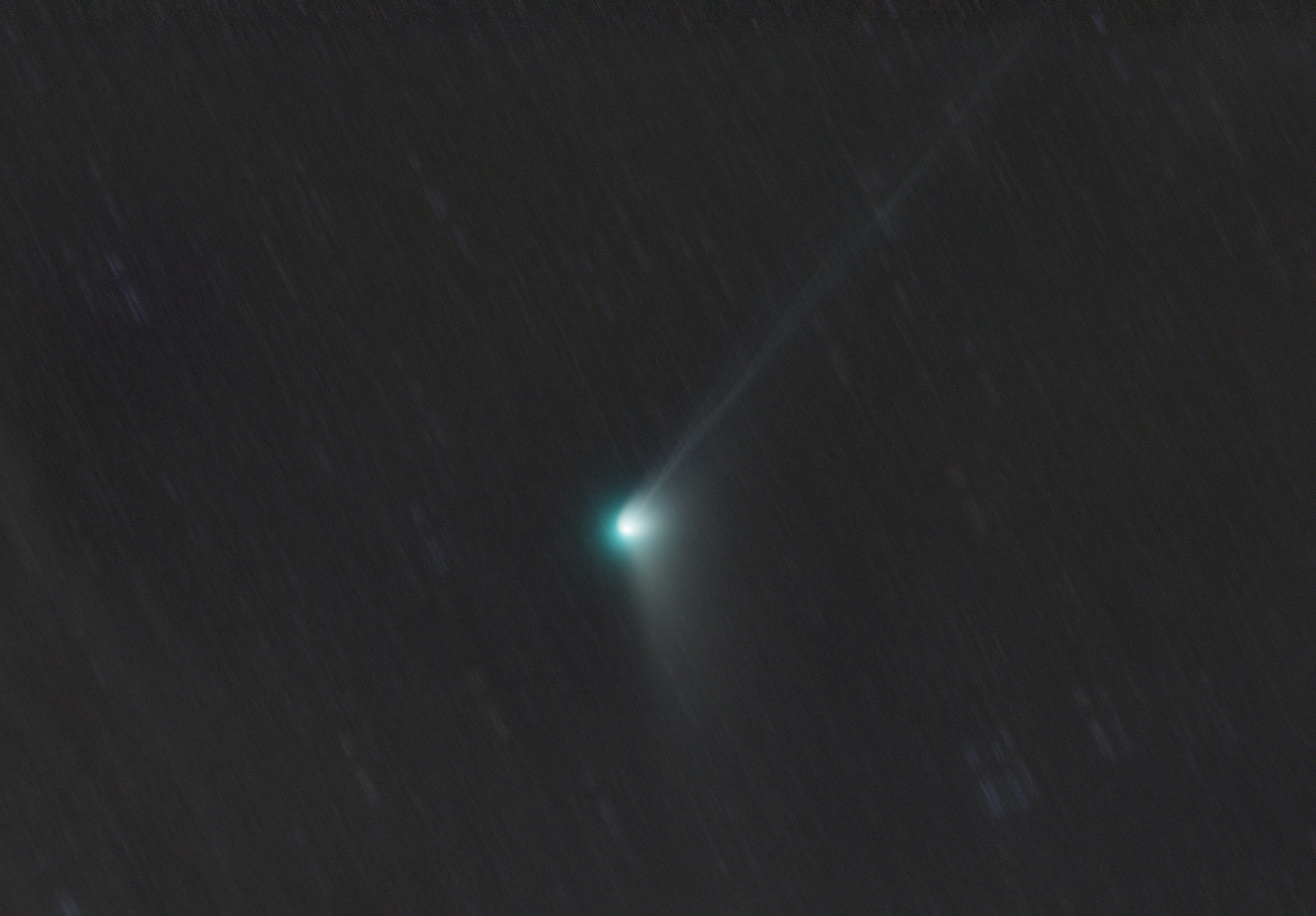
Comet C/2021 A1
IC 2159
Horse Head Nebula
The Ghost of Cassiopeia Nebula
M1
IC 5146
M31
The Lagoon Nebula (M8/NGC 6523)

Roughly 5,000 light-years away, the Lagoon Nebula (Messier 8, NGC 6523) is a large, bright emission nebula in the constellation Sagittarius. This striking image captures its vibrant red glow from ionized gases, especially hydrogen. As a site of active star formation, this nebula contains clouds of hydrogen gas where new stars are born. An open star cluster (NGC 6530), embedded in the interstellar cloud, powers its nebular glow. Also visible within this region are dust lanes, which form the dark regions obscuring parts of the nebula, and give the nebula its name.
The Triangulum Galaxy (M33)

This is an image of the Triangulum Galaxy (M33, NGC 598, one of the closest galaxies to the Milky Way, some 3 million light years away. Located in the constellation Triangulum, it is the third largest galaxy in the Local Group, behind only the Milky Way and the Andromeda Galaxy. Though it can be a challenging object to see visually, a camera brings out its true beauty. Vast regions of pink, star-forming nebulae can be seen in the galaxy’s sweeping spiral arms. The blue color of the spiral arms comes from young, extremely hot stars in the galaxy’s outer regions.
The Orion Nebula (M42)
This detailed image depicts the Orion Nebula, a vibrant diffuse nebula located in the constellation Orion. Roughly 1,344 light years away from Earth, it is one of the most studied objects in the night sky, owing to its large size and extremely bright nature. It is one of the most diverse objects in the night sky, containing areas of dark, emission, and reflection nebulae, as well as star clusters. M42 is home to both protostars and young stars, whose ultraviolet light energizes the surrounding gas causing it to glow brilliantly. This spectacular nebula’s visibility from Earth offers a rare window into the early stages of star formation.
The M78 Nebula (NGC 2068)

This captivating image presents the M78 Nebula, distinguished by its blue* hue typical of reflection nebulae. Situated in the constellation Orion, approximately 1,350 light-years from Earth, M78 is primarily illuminated by the scattered light from young, hot stars. The blue color results from the scattering of stellar light by the surrounding dust particles, similar to how Earth’s sky appears blue due to the scattering of sunlight by the atmosphere. M78 is part of an extremely rich complex of dust and gas known as the Orion Molecular Cloud and is adjacent to regions of both active star formation and dark nebulas. (This image is shot with narrowband filters instead of the traditional red, green, and blue wavelengths, hence the green color instead of blue.)
NGC 2170

This image depicts NGC 2170, a reflection nebula located in the constellation Monoceros about 2,400 light-years away from Earth. Reflecting the light of nearby hot stars, this image contains several bluish reflection nebulae, a red emission region, and dark regions of dense interstellar dust. NGC 2170 is part of a larger nebular complex that includes several other nebulas, making it an interesting object to study.
IC 2599

This striking image captures the Gabriela Mistral nebula, an emission nebula notable for its vibrant hues and dynamic appearance, located at the northwest corner of the Carina Nebula, approximately 7,560 light-years away. The bright yellow and pink regions represent areas of intense star formation. The nebula is sculpted by intense stellar winds and radiation from nearby massive stars, giving it its unique cavities and intricate filaments of gas. A small open cluster can also be seen to the right.
NGC 3372

This detailed image showcases the Carina Nebula, a massive emission nebula approximately 7,500 light-years away in the constellation Carina. Known for its intense luminosity and large size, almost four times the size of the Orion Nebula, the Carina Nebula is one of the largest areas of star formation in our galaxy. The nebula also contains many extremely luminous stars throughout its complex regions of bright and dark nebulosity, including Eta Carinae, which is predicted to undergo supernova in the near future. The image, shot through narrowband filters, reveals the dynamic activity within the nebula, including gas clouds glowing in bright blues and greens due to the variety of ionized gases present.
NGC 3576

An Intricate Emission Nebula in Carina - This image showcases NGC 3576, a beautiful and complex emission nebula approximately 9,000 light-years away from Earth, located in the southern constellation of Carina. Known for its unique, arched filamentary structures that resemble a curling wave, these features are thought to be sculpted by the intense winds and radiation from the nebula’s massive, young central stars. The nebula’s glowing gas predominantly emits light due to the excitation of hydrogen and sulfur, giving it a distinct green and blue appearance when imaged with narrowband filters. It is also called the Statue of Liberty Nebula due to the unique shape of the dark absorption region within it.
Comet C/2021 A1

A Transient Visitor of the Solar System - This captivating image presents Comet C/2021 A1 (Leonard), vividly displaying its glowing coma and prominent dust tail. As the comet travels closer to the Sun, it heats up, causing the release of gas and dust that forms its signature green-blue tail. The tail points away from the Sun and is shaped by the solar wind. C/2021 A1 is notable for its extremely close pass with Earth and Venus, making its closest approach to both on 12/12/21 and 12/18/21 respectively.
IC 2159
This depicts IC 2159, also known as the Monkey Head Nebula, located in the constellation Orion. The nebula is a prime example of an emission nebula, where high-energy ultraviolet light from young, hot stars ionizes the surrounding hydrogen gas, causing it to glow with a characteristic red hue. The intricate shapes and colors are the result of interactions between stellar winds, radiation, and magnetic fields that sculpt the gas and dust. The nebula’s notable monkey head shape is a fascinating result of these dynamic processes. Additionally, the blue regions indicate areas where intense radiation from hot stars has stripped electrons from hydrogen atoms, creating areas of ionized gas. This image provides valuable insight into the star formation processes and the complex structures within nebulae.
Horse Head Nebula
The Horsehead Nebula, also known as Barnard 33, is a dark nebula located in the constellation Orion. This stunning celestial feature gets its name from its distinct horsehead-shaped silhouette, which stands out against the vibrant backdrop of glowing hydrogen gas. Positioned approximately 1,500 light-years away from Earth, the Horsehead Nebula is part of the larger Orion Molecular Cloud Complex, a region rich in star formation.
The Ghost of Cassiopeia Nebula
The nebulae IC 59 and IC 63, also known as the Ghost of Cassiopeia, are located approximately 600 light-years away in the constellation Cassiopeia. These emission and reflection nebulae are illuminated by the bright star Gamma Cassiopeiae, visible near the top right corner of the image. The ultraviolet radiation from Gamma Cassiopeiae is causing the surrounding gas and dust to glow, giving these nebulae their characteristic eerie appearance. IC 63, the brighter nebula on the right, is predominantly an emission nebula, glowing red due to ionized hydrogen. IC 59, on the left, has a mix of reflection and emission, with a bluish tint from scattered starlight. Together, they form a stunning and spooky display in the night sky.
M1
This image captures the stunning beauty of the M1 Crab Nebula, a supernova remnant located in the constellation Taurus. The nebula is the result of a stellar explosion observed by Chinese astronomers in 1054 AD. It spans about 11 light-years across and is situated approximately 6,500 light-years from Earth. The vibrant colors seen in this image are due to various elements emitting light at different wavelengths, with hydrogen in red, oxygen in blue-green, and sulfur in red-orange. The Crab Nebula continues to be a significant object of study in understanding the life cycle of stars.
IC 5146
A star-forming region that appears as a red and pink glow against a background of numerous stars. Located approximately 4,000 light-years away in the constellation Cygnus, this nebula features dark dust lanes and ionized hydrogen gas, indicative of areas where new stars are being born.
M31
One of the few bright galaxies visible to the unaided eye, the Andromeda galaxy is located approximately 2.537 million light-years from Earth in the constellation Andromeda, it spans about 220,000 light-years in diameter, making it the largest galaxy in the Local Group. A supermassive black hole lies at the galaxy’s heart, as seen in the bright core of the image. M32, a satellite galaxy of the Andromeda, can also be seen to the left of the frame.